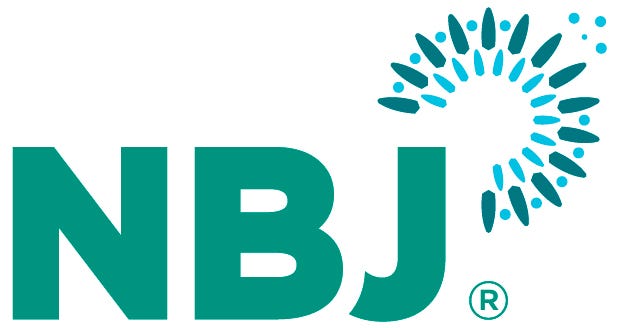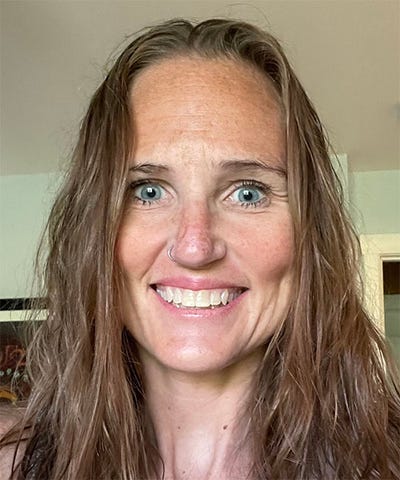
One Saturday evening a few months ago, while dining with my family, I ordered my usual from the waiter: a gin martini, three olives, very dry. When my cocktail arrived, my 4-year-old daughter looked at me with that confused look she gets, and I knew those little, barely connected wheels were turning in her head. Finally, she said, “Daddy, I thought you asked for a dry martini.” I told her I had, and she replied “But that looks very wet.” I explained that dry doesn’t really mean dry when it comes to martinis. To which she replied: “But remember that night when you were reading me the FDLI’s Compilation of Food and Drug Laws and you said that Section 403(a) of the Federal Food Drug and Cosmetic Act says that a food is deemed misbranded if its labeling is false or misleading in any particular?”
After a long pause, and one of the olives, I told her to finish her nuggets.
That exchange got me thinking, though. Although the Federal Food Drug and Cosmetic Act contains the general prohibition against false or misleading food labeling, there are actually several situations where the U.S. Food and Drug Administration (FDA) regulations expressly allow food labels to state things that may be misleading.
When mislabeling is permissible
In certain situations, FDA expressly permits you to represent that your food is from a place that it isn’t.
First, it is permissible to use a potentially misleading statement of geographic origin if it is part of a trade name and it: “Has been so long and exclusively used by a manufacturer or distributor that it is generally understood by the consumer to mean the product of a particular manufacturer or distributor.” Apparently that is how Kentucky Fried Chicken has been getting away with it for all these years! My older daughter grew up thinking that the corner of 14th and S Streets was Kentucky. She could never figure out where they kept all those horses. Also, Mars bars aren’t made by little green men (or women since women are apparently from Venus, not Mars).
Second, FDA regulations permit “a name whose market significance is generally understood by the consumer to connote a particular class, kind, type, or style of food rather than to indicate geographical origin.” Think clam chowders – Manhattan or New England. But don’t think too much or you will get hungry (by the way, do you know that oyster crackers don’t really contain oysters?).
Finally, FDA lets you use any old location on your label as long as it is “so arbitrary or fanciful that it is not generally understood by the consumer to suggest geographic origin.” Think AriZona Iced Tea (made in Lake Success, New York) or “5th Avenue” candy bars (made in Hershey, Pennsylvania). I don’t think anything is actually made on 5th Avenue in New York, other than reservations.
Like the FDA, the Federal Trade Commission (FTC) prohibits false or misleading claims, and generally requires all claims to be supported by adequate substantiation. But there is at least one exception to that: claims that are considered to be “puffery.” As the FTC has stated: “The Commission generally will not pursue cases involving obviously exaggerated or puffing representations, i.e., those that the ordinary consumers do not take seriously.” This is simply the best article ever written, and I wear my “World’s Greatest Dad” T-shirt with pride. Take that, FTC.
What? Froot Loops don’t contain fruit?
My thoughts were interrupted by my 4-year old, who was already curious about what we would be having for Sunday morning breakfast.
Being the “World’s Greatest,” I’m obviously a very involved, health conscious father. Accordingly, I always strive to ensure that my daughters have a plenty of fruit before heading out the door to ... wherever it is that the nanny takes them. That’s why I always give them Froot Loops. It's fruit, and they love it! I told the family that Sunday morning would feature a Froot Loop fruit feast. Then my wife gave me a look. What? There is no fruit? But it says ... what? They spell it says “Froot??” Wow. Clever.
As this may be a new angle to advise our clients, I e-mailed our associate La Toya, asking her to see if the FDA or FTC has any exceptions to the prohibition against false or misleading labeling if you just spell the words in a funny way. I am thinking “Kancer Flakes” or “Toona Fish.”
Turns out I wasn’t the only one shocked to find out that those little circles of happiness were not actually made from fruit. There have been at least three lawsuits filed in California by “consumers” who, like me, thought that there was actual fruit in those loops. In two of the cases, the judges held that use of the word “Froot” cannot reasonably be interpreted as implying the product contained real fruit, partially because of its spelling and partially because fruit does not come in loops. The third case, filed in April 2010, is still pending.
Other people in California apparently thought that “Crunchberries” in Cap’n Crunch cereal were real fruit! They sued the manufacturer under California’s Unfair Competition Law, arguing that it had engaged in a deceptive act through the labeling of its cereal box. The first case was dismissed in May 2009. In dismissing the case, the judge reasoned:
"In this case . . . while the challenged packaging contains the word 'berries' it does so only in conjunction with the descriptive term 'crunch.' This Court is not aware of, nor has Plaintiff alleged the existence of, any actual fruit referred to as a 'crunchberry.' Furthermore, the 'Crunchberries' depicted on the [box] are round, crunchy, brightly-colored cereal balls, and the [box] clearly states both that the Product contains “sweetened corn & oat cereal” and that the cereal is 'enlarged to show texture.' Thus, a reasonable consumer would not be deceived into believing that the Product in the instant case contained a fruit that does not exist. . . . So far as this Court has been made aware, there is no such fruit growing in the wild or occurring naturally in any part of the world."
The judge was apparently not happy that the case was brought at all. When holding that he would not allow the plaintiff the normal time to submit an amended complaint after the case was dismissed, he wrote: “The survival of the instant claim would require this Court to ignore all concepts of personal responsibility and common sense. This Court has no intention of allowing that to happen.”
I mean come on. Even I knew that there is no real fruit called a “Crunchberry.” It’s just like a “kumquat.”
Why trans fat-free foods can actually contain trans fats
If the FDA had definitions or standards for using the terms ‘Froot” or “Crunchberry,” on food product labels, then these cases may have been dismissed on Federal preemption grounds. For example, consumers recently sued Quaker Oats’ (“Quaker”) arguing that they were mislead as to the health value of Quaker’s “Chewy” brand granola bar labels because of label statements such as “wholesome” and “0 gram trans fats.” They alleged that the trans fat claim was false and misleading under state law because the product contains hydrogenated vegetable oil. Quaker argued that FDA regulations allowed to make such a claim because any level of trans fat that falls below 0.5 gram per serving must be rounded down to zero.
In its October 2010 decision, the court agreed with Quaker, finding that the plaintiffs’ state law claims sought to impose a non-identical burden that would conflict with federal law and dismissed that claim. However, the plaintiff’s were allowed to proceed with its challenge based on claims not regulated by the FDA, like “wholesome.”
Can Havana Club rum hail from Puerto Rico?
In addition to potential enforcement by the FDA and FTC, and lawsuits by consumers, a company can also be sued by a competitor for false or misleading claims. Getting back to geographic origin claims, while I am not a rum drinker, a recent a case centered on the fact that Bacardi USA Inc.’s “Havana Club” rum was made in Puerto Rico, not Cuba. Pernod Ricard USA LLC, a distributor of competing rums, sued Bacardi under Section 43(a) of the Lanham Act (“Section 43(a)”), alleging that the name “Havana Club” was a false and misleading statement concerning the geographic origin of the product.
To prevail under Section 43(a) of the Lanham Act, a plaintiff is required to prove: (1) the defendant had made false or misleading statements; (2) there was actual deception or at least a tendency to deceive a substantial portion of the intended audience; (3) the deception is “material” in that it is likely to influence purchasing decisions; (4) the representation at issue was used in commerce; and (5) there is a likelihood of injury to the plaintiff in terms of declining sales, loss of market share, or loss of good will.
In its April 2010 decision, the court discussed the fact that what constitutes actionable misrepresentation of geographic origin under the Lanham Act has not been well established. It could mean either a false or misleading statement about where a product was produced, or the geographic “heritage” of a product. Under either theory, however, the Court held that Pernod did not prove its case. With respect to a misrepresentation as to where it was produced, the Court found that in addition to the “Havana Club” brand name, the label of the product clearly stated that is a “Puerto Rican Rum and that it was “Crafted in Puerto Rico.” With those elements, the Court found that the label “clearly and truthfully provides the origin of defendant’s rum, and is not deceptive.”
As for the brand name being deceptive with respect to the heritage of the product, the Court also found that the evidence was on the side of Bacardi. The evidence included the fact that Bacardi was originally a Cuban company, and that the recipe and rights for the product had been acquired from a Cuban, family-owned company. The Court was not swayed by Pernod’s argument that changes to the original product’s formula and manufacturing processes annulled the rum’s history or heritage, finding that it is still “derived primarily” from the Cuban family’s recipe. Thus, the Court concluded, that the Havana Club labels were not false or misleading with respect to the geographic origin of the product.
To see if the court got this one right, I asked my middle daughter, who we call D-SHEA (I always thought that was a pretty acronym), where she thought “Havana Club” rum was from. She told me I was weird.
A potential safe harbor for clever marketers?
All of this got me thinking again. I agree that reasonable consumers would not think that all Manhattan clam chowders are made in New York, that there is actual fruit in Froot Loops, that there are field of Cruchberries dotting the countryside, or that Havana Club Puerto Rican Rum is made in Cuba. However, other words or images may not be as obvious. What should a marketer do when he or she is not sure?
I was thinking about that while sipping my second martini. My oldest daughter, who we call FIFRA (another pretty acronym), asked why I was having another drink. I replied “Daddy needs his ‘medicine’,” and made finger quotes when I said “medicine.” That’s it! What if the rules were changed so that there is a safe harbor for any word or phrase in quotation marks! After all, that is the universal way to indicate to people that you do not really mean what you are saying. Just think of it! With “Real” Fruit! All “Safe” Ingredients! Tested On “People.” Wait, was that my second martini or my third?
I decided to refine that idea another day. It was time to get D-SHEA, FIFRA, and little FDAMA home to bed. Good thing my wife was driving.
About the Authors
You May Also Like







